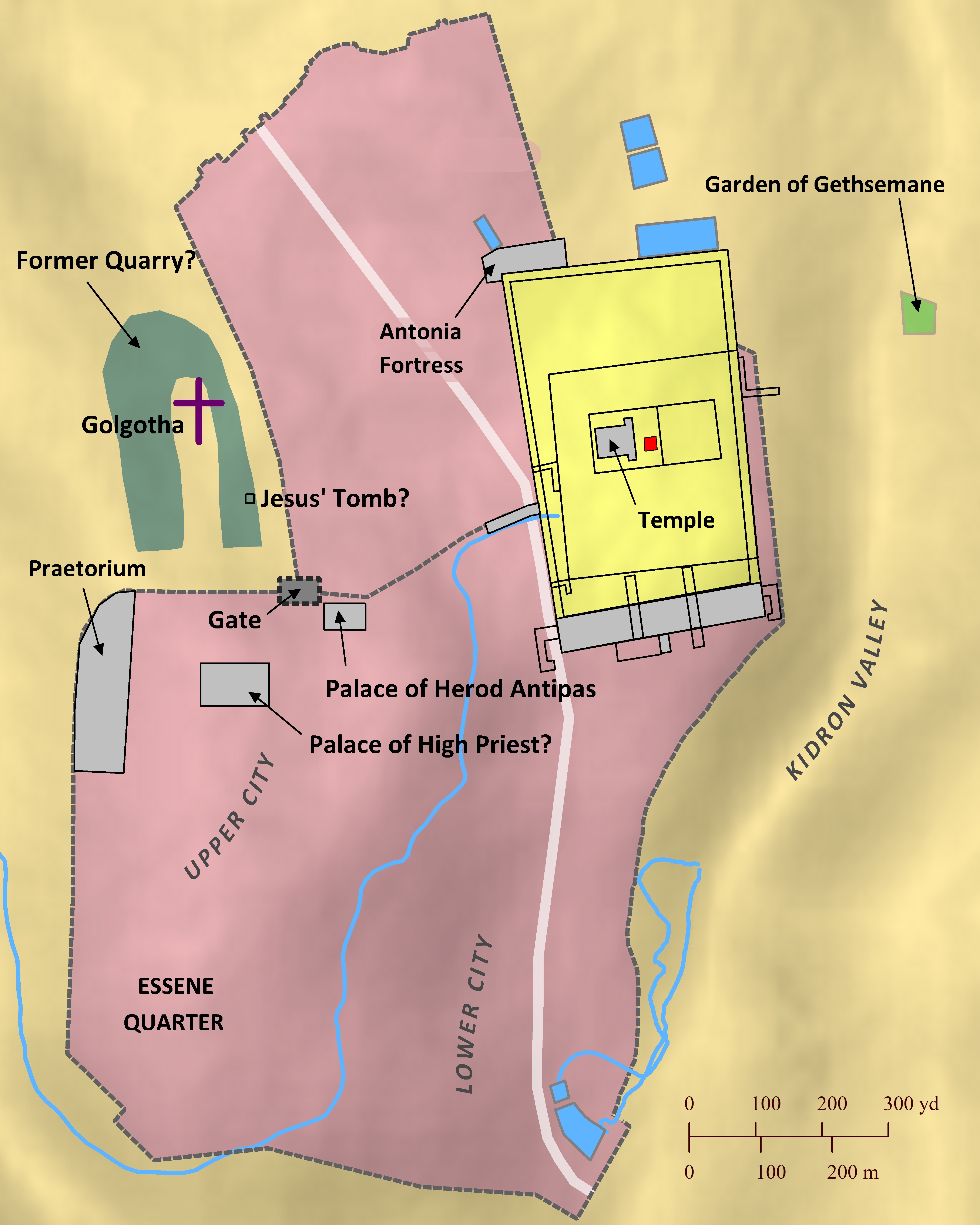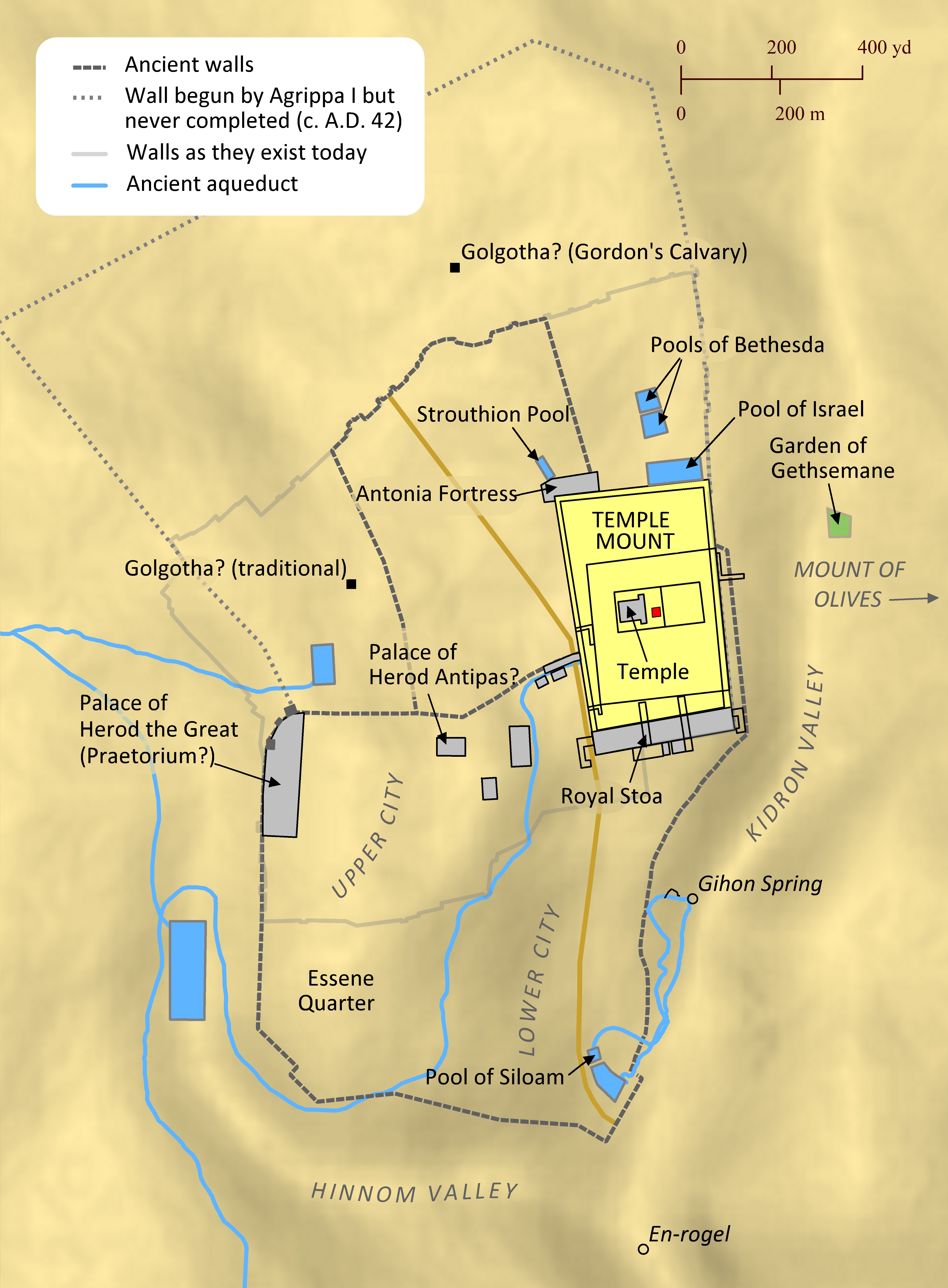Note: This view shows ‘verses’ which are not natural language units and hence sometimes only part of a sentence will be visible—click on any Bible version abbreviation down the left-hand side to see the verse in more of its context. Normally the OET discourages the reading of individual ‘verses’, but this view is only designed as a tool for doing comparisons of different translations—the older translations are further down the page (so you can read up from the bottom to trace the English translation history). The OET segments on this page are still very early looks into the unfinished texts of the Open English Translation of the Bible—please double-check these texts in advance before using in public.
AICNT After saying these things, Jesus went out with his disciples across the Kidron ravine, where there was a garden, into which he and his disciples entered.
OEB ¶ When Jesus had said this, he went out with his disciples and crossed the Kidron ravine to a place where there was a garden, into which he and his disciples went.
WEBBE When Jesus had spoken these words, he went out with his disciples over the brook Kidron, where there was a garden, into which he and his disciples entered.
WMBB When Yeshua had spoken these words, he went out with his disciples over the brook Kidron, where there was a garden, into which he and his disciples entered.
NET When he had said these things, Jesus went out with his disciples across the Kidron Valley. There was an orchard there, and he and his disciples went into it.
LSV Having said these things, Jesus went forth with His disciples beyond the Brook of Kidron, where [there] was a garden, into which He entered, Himself and His disciples,
FBV After Jesus had finished speaking, he and his disciples crossed over the Kidron brook and went into an olive grove.
TCNT After saying these things, Jesus went out with his disciples across the Kidron Valley, where there was a garden, which he entered along with his disciples.
T4T After Jesus finished praying, he went across the Kidron Brook, along with us disciples, to a grove of olive trees.
LEB When[fn] Jesus had said these things, he went out with his disciples to the other side of the ravine of the Kidron, where there was a garden into which he and his disciples entered.
BBE When Jesus had said these words he went out with his disciples over the stream Kedron to a garden, into which he went with his disciples.
Moff Having said this, Jesus went out with his disciples across the Kidron ravine to an orchard, which he entered in the company of his disciples.
Wymth After offering this prayer Jesus went out with His disciples to a place on the further side of the Ravine of the Cedars, where there was a garden which He entered—Himself and His disciples.
ASV When Jesus had spoken these words, he went forth with his disciples over the brook Kidron, where was a garden, into which he entered, himself and his disciples.
DRA When Jesus had said these things, he went forth with his disciples over the brook Cedron, where there was a garden, into which he entered with his disciples.
YLT These things having said, Jesus went forth with his disciples beyond the brook of Kedron, where was a garden, into which he entered, himself and his disciples,
Drby Jesus, having said these things, went out with his disciples beyond the torrent Cedron, where was a garden, into which he entered, he and his disciples.
RV When Jesus had spoken these words, he went forth with his disciples over the brook Kidron, where was a garden, into the which he entered, himself and his disciples.
SLT Jesus having said these, went out with his disciples beyond the torrent Kedron, where was a garden, into which he came, he and his disciples.
Wbstr When Jesus had spoken these words, he went forth with his disciples over the brook Kedron, where was a garden, into which he entered, and his disciples.
KJB-1769 When Jesus had spoken these words, he went forth with his disciples over the brook Cedron, where was a garden, into the which he entered, and his disciples.
KJB-1611 ¶ When Iesus had spoken these wordes, hee went foorth with his disciples ouer the Brooke Cedron, where was a garden, into the which hee entred and his disciples.
(¶ When Yesus/Yeshua had spoken these words, he went forth with his disciples over the Brooke Cedron, where was a garden, into the which he entered and his disciples.)
Bshps When Iesus had spoken these wordes, he went forth with his disciples ouer the brooke Cedron, where was a garden, into the whiche he entred, & his disciples.
(Modernised spelling is same as from KJB-1769 above)
Gnva When Iesus had spoken these things, hee went foorth with his disciples ouer the brooke Cedron, where was a garden, into the which he entred, and his disciples.
(When Yesus/Yeshua had spoken these things, he went forth with his disciples over the brook Cedron, where was a garden, into the which he entered, and his disciples. )
Cvdl Whan Iesus had thus spoke, he wete forth with his disciples ouer the broke Cedron, where there was a garde, in to the which Iesus entred and his disciples.
(When Yesus/Yeshua had thus spoke, he went forth with his disciples over the broke Cedron, where there was a garde, in to the which Yesus/Yeshua entered and his disciples.)
TNT When Iesus had spoken these wordes he wet forth with his disciples over the broke Cedron where was a garden into the which he entred with his disciples.
(When Yesus/Yeshua had spoken these words he wet forth with his disciples over the broke Cedron where was a garden into the which he entered with his disciples. )
Wycl Whanne Jhesus hadde seid these thingis, he wente out with hise disciplis ouer the strond of Cedron, where was a yerd, in to which he entride, and hise disciplis.
(When Yhesus had said these things, he went out with his disciples over the strond of Cedron, where was a yerd, in to which he entered, and his disciples.)
Luth Da JEsus solches geredet hatte, ging er hinaus mit seinen Jüngern über den Bach Kidron. Da war ein Garten, darein ging JEsus und seine Jünger.
(So Yesus such talked had, went he out with his disciples above the stream Kidron. So what/which a garden, in_it/in_there went Yesus and his disciple.)
ClVg Hæc cum dixisset Jesus, egressus est cum discipulis suis trans torrentem Cedron, ubi erat hortus, in quem introivit ipse, et discipuli ejus.[fn]
(This when/with would_have_said Yesus, going_out it_is when/with students to_his_own across torrent Cedron, where was garden, in/into/on which entered exactly_that/himself, and students his. )
UGNT ταῦτα εἰπὼν, Ἰησοῦς ἐξῆλθεν σὺν τοῖς μαθηταῖς αὐτοῦ πέραν τοῦ χειμάρρου τοῦ Κεδρὼν, ὅπου ἦν κῆπος, εἰς ὃν εἰσῆλθεν αὐτὸς καὶ οἱ μαθηταὶ αὐτοῦ.
(tauta eipōn, Yaʸsous exaʸlthen sun tois mathaʸtais autou peran tou ⱪeimarrou tou Kedrōn, hopou aʸn kaʸpos, eis hon eisaʸlthen autos kai hoi mathaʸtai autou.)
SBL-GNT Ταῦτα ⸀εἰπὼν Ἰησοῦς ἐξῆλθεν σὺν τοῖς μαθηταῖς αὐτοῦ πέραν τοῦ χειμάρρου ⸀τοῦ Κεδρὼν ὅπου ἦν κῆπος, εἰς ὃν εἰσῆλθεν αὐτὸς καὶ οἱ μαθηταὶ αὐτοῦ.
(Tauta ⸀eipōn Yaʸsous exaʸlthen sun tois mathaʸtais autou peran tou ⱪeimarrou ⸀tou Kedrōn hopou aʸn kaʸpos, eis hon eisaʸlthen autos kai hoi mathaʸtai autou.)
RP-GNT Ταῦτα εἰπὼν ὁ Ἰησοῦς ἐξῆλθεν σὺν τοῖς μαθηταῖς αὐτοῦ πέραν τοῦ χειμάρρου τῶν Κέδρων, ὅπου ἦν κῆπος, εἰς ὃν εἰσῆλθεν αὐτὸς καὶ οἱ μαθηταὶ αὐτοῦ.
(Tauta eipōn ho Yaʸsous exaʸlthen sun tois mathaʸtais autou peran tou ⱪeimarrou tōn Kedrōn, hopou aʸn kaʸpos, eis hon eisaʸlthen autos kai hoi mathaʸtai autou.)
TC-GNT Ταῦτα εἰπὼν [fn]ὁ Ἰησοῦς ἐξῆλθε σὺν τοῖς μαθηταῖς αὐτοῦ πέραν τοῦ χειμάρρου [fn]τῶν Κέδρων, ὅπου ἦν κῆπος, εἰς ὃν εἰσῆλθεν αὐτὸς καὶ οἱ μαθηταὶ αὐτοῦ.
(Tauta eipōn ho Yaʸsous exaʸlthe sun tois mathaʸtais autou peran tou ⱪeimarrou tōn Kedrōn, hopou aʸn kaʸpos, eis hon eisaʸlthen autos kai hoi mathaʸtai autou. )
Key for above GNTs: yellow:punctuation differs, red:words differ (from our SR-GNT base).

